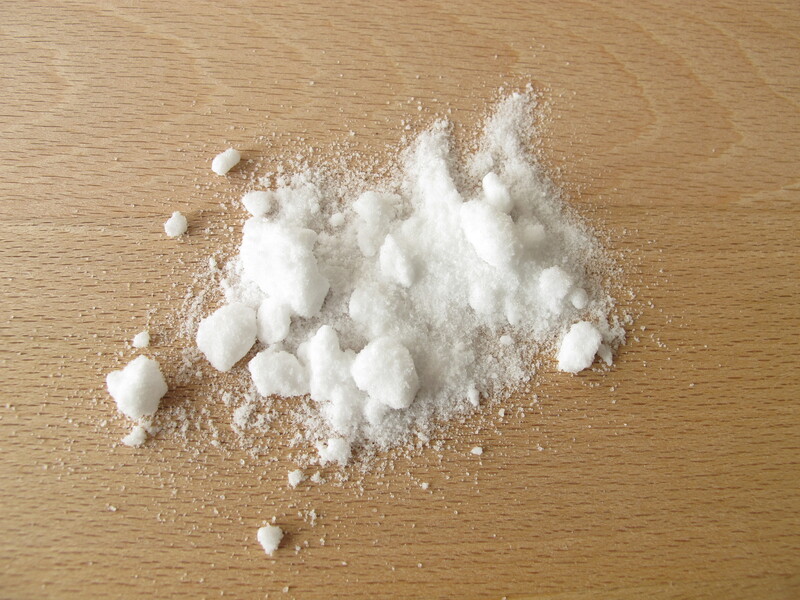Master the Wash: Sofa Covers Stay Pristine With These Secrets
Posted on 02/09/2025
Master the Wash: Sofa Covers Stay Pristine With These Secrets
Have you ever wondered how to keep your sofa covers looking fresh, clean, and as inviting as the day you brought them home? Whether your couch is a family gathering place, a pet's favorite spot, or simply sees a lot of daily use, maintaining crisp and vibrant fabric isn't just about appearance--it's also about hygiene and comfort. In this comprehensive guide, you'll discover effective washing techniques, care tips, and little-known secrets to ensure your sofa covers stay pristine and last for years.
Why Keeping Your Sofa Covers Clean Matters
Sofa covers, slipcovers, and upholstery fabrics do much more than beautify your living space. They shield your furniture from stains, spills, dust, allergens, and everyday wear and tear. Regular and correct cleaning extends the lifespan of your couch and creates a healthier environment at home. Ignoring the cleanliness of your slipcovers can lead to:
- Fading and damage to fabric fibers
- Buildup of odors, dust mites, and allergens
- Persistent stains that are harder to remove over time
- An uninviting, unkempt appearance
Understanding Your Sofa Cover Fabric
Before jumping into any cleaning routine, identify your sofa cover's material. Each fabric--be it cotton, polyester, velvet, linen, or blends--has unique maintenance requirements.
- Cotton: Durable and machine-washable, but may shrink if washed with hot water.
- Polyester: Resistant to shrinking and fading; use mild detergents.
- Velvet: Needs gentle cleaning; often best dry cleaned or spot cleaned.
- Linen: Absorbs moisture quickly; prone to wrinkles, so wash gently.
- Blended Fabrics: Always refer to the manufacturer's label; blending adds complexity to maintenance.
Check the care tag! A label provides crucial insights such as recommended water temperature, cleaning solutions, and drying settings, which sets the foundation for fabric longevity and like-new appearance.

Pre-Wash Secrets: Preparation is Everything
Proper care starts even before you turn on the washing machine. Use these essential steps for optimal sofa cover washing results:
- Vacuum Thoroughly: Remove dust, crumbs, and pet hair using your vacuum's upholstery attachment. This prevents dirt from embedding deeper during the wash.
- Test for Colorfastness: Dampen a small, inconspicuous area with water and press with a white cloth. If color transfers, you'll want to avoid machine washing and opt for professional cleaning.
- Spot Treat Stains: Use a gentle fabric cleaner or a homemade mix (like water and mild dish soap). Dab, don't rub, to lift stains without damaging fibers.
- Close Zippers & Fasten Velcro: Protect the cover (and your washer) from snagging or stretching during the cycle.
Which Wash: Hand, Machine, or Dry Clean?
Not all couch covers are created equal when it comes to cleaning. Review these methods for the best match:
- Machine Wash: Common for cotton and sturdy synthetics. Use cold or lukewarm water and a gentle cycle with a mild detergent. Never overload your washing machine to ensure thorough cleaning and avoid wrinkling.
- Hand Wash: Preferred for delicate, embroidered, or sensitive fabrics. Fill a tub with cool water and launder using a soft-touch approach. Rinse thoroughly to prevent residue buildup.
- Dry Clean: Essential for velvet, intricate weaves, or if the care label specifies. Professional cleaning keeps the original texture and sheen intact.
Always double-check care labels to prevent accidental damage!
Washing Sofa Covers: Step-by-Step Guide
Let's break down the process to ensure you get pristine results every time:
- Remove the Sofa Covers Carefully
- Start at one end and ease zippers or buttons open gently to avoid rips.
- Shake outdoors to release loose dirt first if possible.
- Select the Right Detergent
- Choose a mild, color-safe detergent to prevent fading.
- Avoid bleach unless the tag specifies it's safe.
- Use the Correct Water Temperature
- Cold water is best for bold or dark colors and delicate materials.
- Warm water can help lift stains in durable fabrics, but check the label!
- Select a Gentle Wash Cycle
- The delicate or gentle cycle reduces agitation to avoid shrinkage or deformation.
- Rinse Thoroughly
- Double-rinse if necessary to ensure all detergent is removed, which prevents residue and dullness.
- Do Not Over-Dry
- Avoid high-heat drying, which can shrink or distort covers. Air-drying is optimal. Lay flat or hang to maintain shape.
- If using a dryer, opt for a low-heat or air-only cycle and remove covers while slightly damp to minimize wrinkles.
- Iron if Needed
- Iron the sofa covers while slightly damp on a low setting. Use a pressing cloth to avoid shine marks or burns.
- Fit Back While Fresh
- Refit your pristine sofa cover while it's just a bit damp; this helps it contour beautifully to your couch and reduces creases.
Additional Tips to Keep Sofa Covers Spotless
Washing is just one part of sofa cover care. Consistent maintenance can keep your couch covers looking like new for years:
- Rotate and Flip: Swap cover pieces (if separate), and rotate cushions regularly to distribute wear evenly.
- Vacuum Weekly: Prevents dust and crumbs from settling in, reducing the need for frequent deep-cleaning.
- Address Stains Immediately: Blot spills right away--never rub. Quick action keeps stains from setting in.
- Keep Pets Clean: Regularly groom pets to minimize shedding and dirt transfer onto your sofa slipcovers.
- Use Fabric Sprays: Odor neutralizers and fabric protectors can help maintain freshness between washes.
- Minimize Direct Sunlight: Prolonged UV exposure fades fabric colors. Position couches away from sun or use window treatments.
Stain-Busting Sofa Cover Hacks
Some tough stains require targeted approaches. Try these home remedies for better results:
- Red Wine or Berry Juice: Blot with cold water, sprinkle baking soda, and after a few minutes, rinse. Wash as usual.
- Grease or Oil: Sprinkle cornstarch or talcum powder to absorb oil. After an hour, brush off and wash with a gentle degreaser.
- Ink: Dab with isopropyl alcohol on a cotton swab; test first in a hidden area.
- Pet Accidents: Neutralize odors with a vinegar-water solution before laundering.
Always test homemade solutions on a hidden patch first!
Storage Secrets: Keep Sofa Covers Pristine During Off-Season
If you own multiple sets of sofa covers for different seasons or aesthetics, proper storage is key:
- Clean Before Storing: Don't put away covers with stains or dirt--they'll be much harder to clean after months in storage.
- Fold, Don't Cram: Store covers folded in a breathable cotton bag rather than plastic. This prevents mold and musty odors.
- Keep in a Cool, Dry Place: Avoid attics or damp basements. Good airflow keeps fabrics fresh.
- Add Cedar, Avoid Mothballs: Natural cedar chips deter pests without leaving behind harsh chemical odors.
When to Replace or Professional Clean Your Sofa Covers
Even the most diligent care routine can only do so much if your couch covers are several years old, or if stains simply won't budge. Professional cleaning can revitalize tired fabric or treat tricky issues like mold, mildew, or set-in pet odors. However, if covers:
- Have multiple tears or worn spots
- Do not fit properly due to repeated shrinking or stretching
- Show permanent discoloration or damage caused by sunlight or harsh cleaners

Frequently Asked Questions: Keeping Sofa Covers Fresh
How often should I wash my sofa covers?
For high-traffic living rooms, washing your covers every 1-2 months helps maintain their appearance and hygiene. For less-used spaces, a quarterly wash may suffice, with spot-cleaning as needed.
Can I put sofa covers in the dryer?
Check the care label carefully. Air-drying is almost always safer and maintains the shape and size of your sofa covers. If using a dryer, always use the lowest heat possible and remove covers while slightly damp to avoid wrinkles and shrinking.
What should I do if the sofa cover shrinks?
If your cover feels tight after laundering, try stretching and smoothing it onto your sofa while still damp. This can help reshape the fit before the fabric sets.
Is fabric softener safe for all upholstery?
Use fabric softener only if the care tag approves. For high-tech or stain-resistant synthetics, softener may interfere with protective coatings--when in doubt, skip it.
Conclusion: Embrace the Secrets--Master the Wash for Pristine Sofa Covers
By following these expert tips, tricks, and insider secrets, you'll transform your approach to couch cover care. It's not just about cleaning--it's about prolonging the elegance, comfort, and functionality of your living space. Regular maintenance, attention to fabric details, and proper storage will ensure your sofa covers remain pristine for years to come.
Say goodbye to tired, dingy upholstery. With these wash mastery tips, you'll always be ready for unexpected guests and cozy movie marathons--on a sofa that looks and feels brand new!
Remember: A little care now means years of beauty, comfort, and peace of mind. Happy washing!



